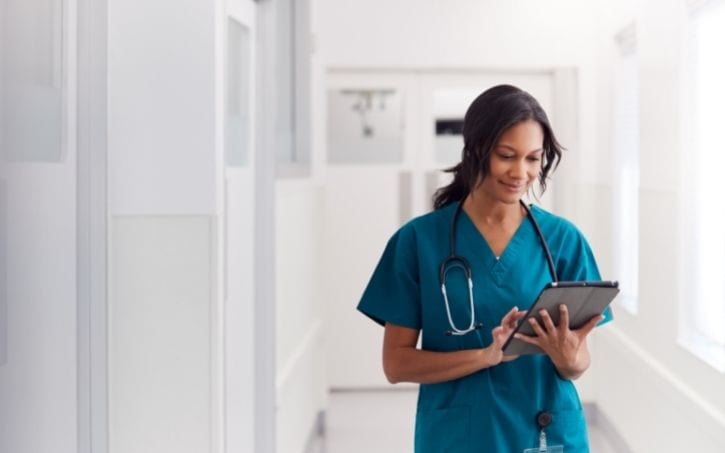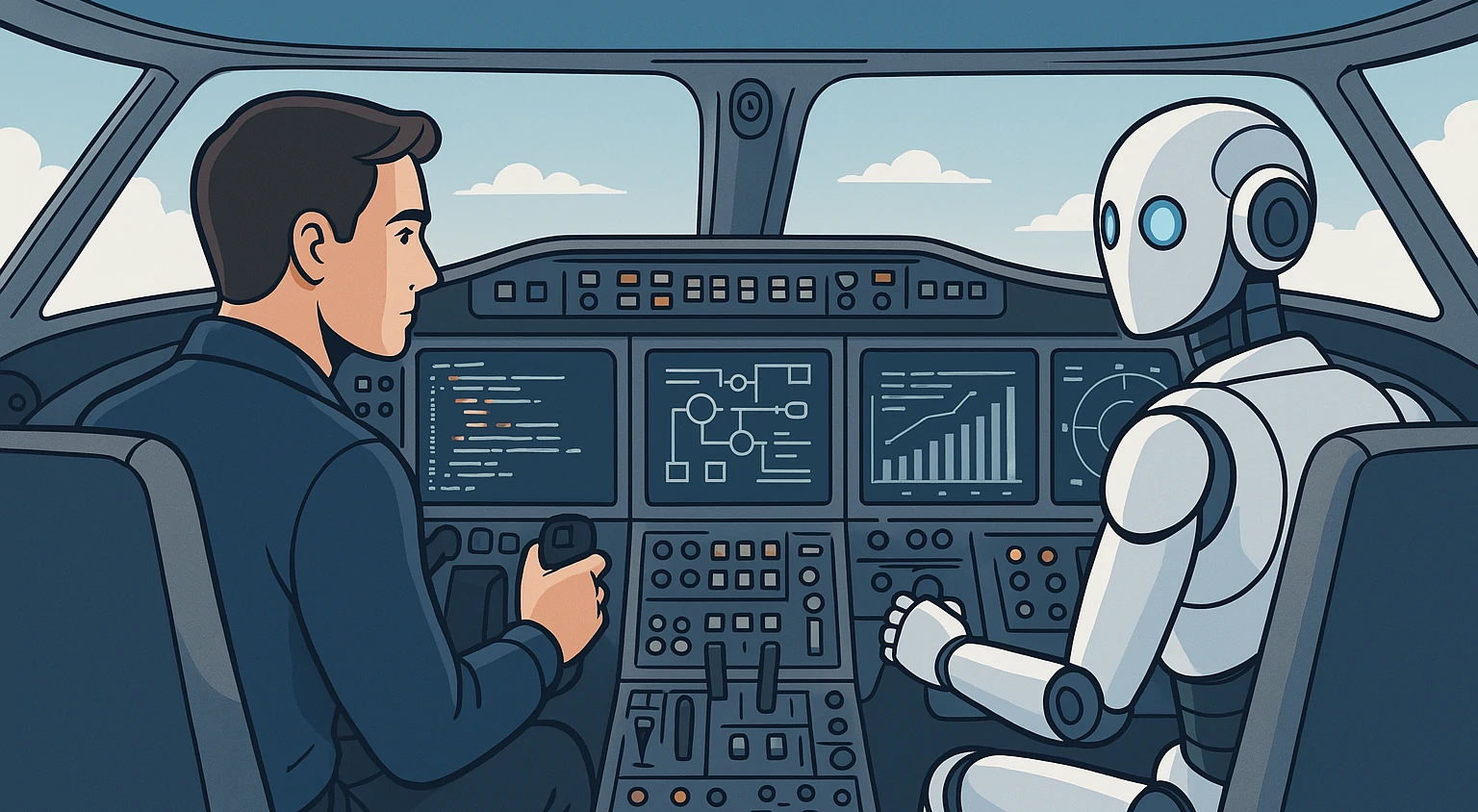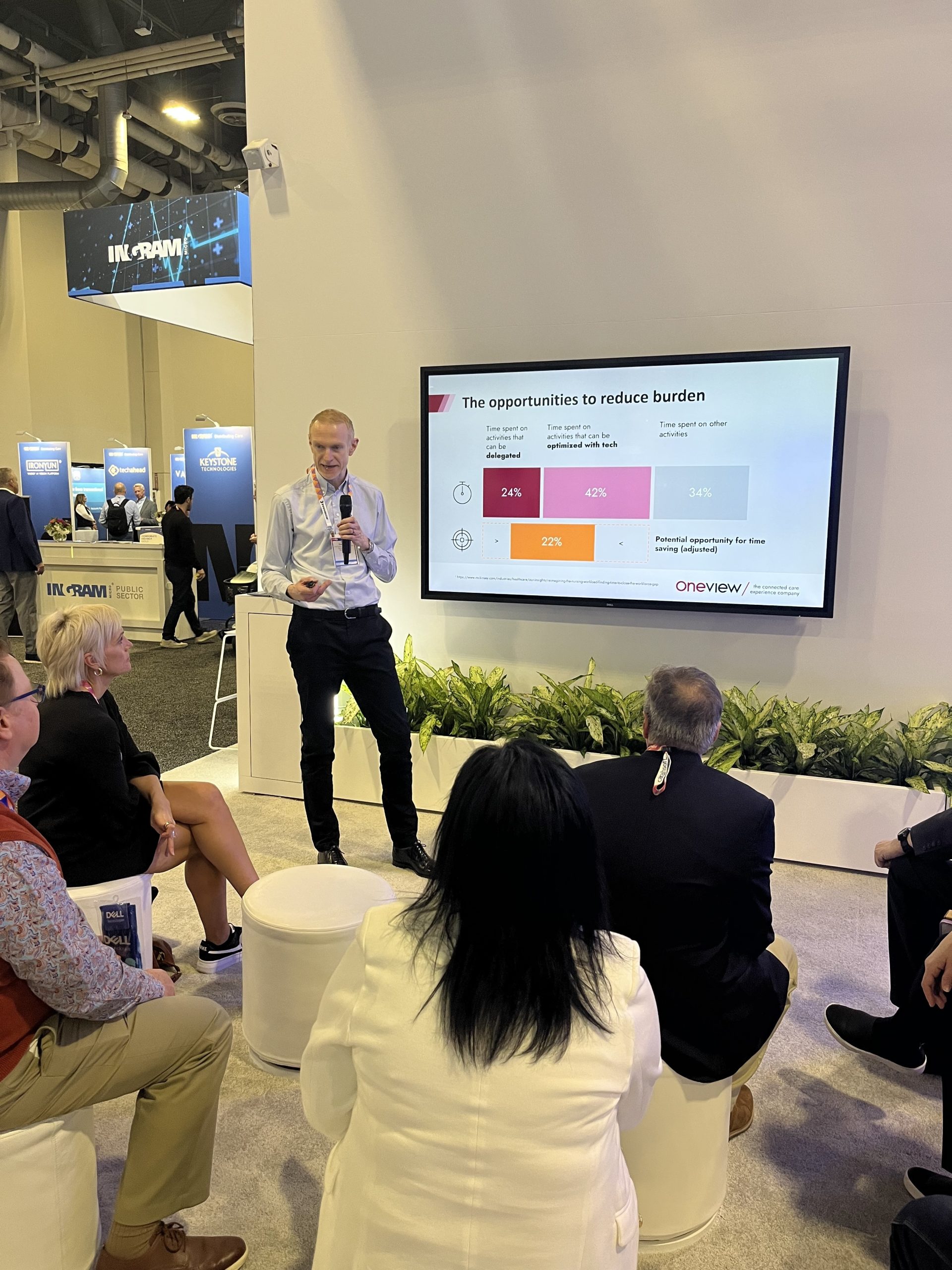Oneview Healthcare Chief Technology Officer
One of the reasons I love working in healthcare is because of the tremendous opportunity to create positive experiences.
No matter who you are, it is very likely that you have a healthcare experience, either directly through yourself or a family member or indirectly through friends and colleagues.
A lot of these experiences will not have been pleasant, even if the outcome was favourable.
Healthcare tolerates a level of service that other industries would baulk at. Imagine dropping your car in for service and having to wait on a chair for three hours in a corridor before someone sees you. I can’t imagine you would ever return to that garage.
The poor experience in healthcare is often not because the level of care was substandard but because the communication between patient and provider was constrained. Healthcare workers are under resourced and over worked. They simply don’t have the time that patients require to be adequately informed and engaged in their healthcare.
Technology is offering some solutions to that. By improving the workflow and automation of healthcare, outcomes can be improved and costs can be reduced.
Robotic Tugs
Robotic tugs are autonomous drones that deliver medicine and other goods throughout the hospital. Being robots they work 24 hours a day. The University of California San Francisco deployed the largest collection of automated drones in any hospital in the world for their new facility in Mission Bay, in the heart of San Francisco.
The 25 strong fleet of drones average 40km a day and make 180 trips. That’s 40km of walking that care team members don’t need to walk and a huge amount of time they can better spend, caring for patients.
Here’s a video link to a piece that CNet did on the robotic tugs, it’s pretty cool – who doesn’t love robots!
Building Management Systems
For the robots to function they need to be able to interact with doors and lifts. For a long time there have been building management systems that help control the temperature, air conditioning, and lighting in large buildings.
What we’re seeing now though are integration building management systems. These tie together many disparate systems and provide APIs for third parties to integrate to. This allows for some amazing interactions.
First off, you get all the energy efficiency benefits. When a system gets the message that the patient has been discharged and there is no patient in the room then that system can notify the air conditioning to switch off, the lights to turn off. When a patient gets admitted, the room springs back to life, adjusting the temperature and lighting controls. The lighting controls can also be triggered automatically when a care team member enters the room at night to give floor level lighting so that patients can be rounded reducing the trip risk for care team staff.
If a Code Blue emergency occurs, where the patient needs to be transported to another area, the alerting system informs the building. Automatically, the doors along the route open. Lifts can synchronise. The entire route can be lit differently. Technology like this saves lives by shaving off those crucial seconds or minutes.
For emergency evacuations the building can automatically secure some areas and open others. Patients, family members, and staff are all led safely out of the building.
Monitoring systems tie into all of this so that fire alarms, tracking systems, and nurse call all seamlessly integrate.
RTLS
RTLS means real time location services. These are devices that help track patients, staff, or assets. For night shift or staff members in high risk wards like psych wards, these can function as alert beacons, instantly summoning security staff to an issue.
For other wards they can be used to track wander risk patients, or children in a maternity ward.
We’re working with Assisted Living and Long Term Care facilities to incorporate fall detection using accelerometers. One of the prime reasons for extended hospital visits is because a patient has a slip or fall while in hospital. These avoidable events can add weeks to their stay and drive costs and capacity pressure up. Detecting a fall after it happens is one thing but detecting high risk patients getting up and leaving their bed in the middle of the night helps stop an incident before it occurs.
These devices are becoming more integrated to also allow vital signs monitoring as the patient wears them. This allows the patient to stay mobile while still keeping track of their progress.
Interactive Patient Systems
Interactive Patient Systems replace the dumb TV in the room. They are devices, TVs, tablets, touch screen terminals that deliver healthcare information to the patient at the bedside. Patients are guided to education content around their condition, goals that they should complete to aid their recovery. They have discharge goals to help get them out of the hospital and home sooner. They can see and interact with their treatment team, allowing them to give kudos, participate in telemedicine sessions, or ask questions around their care.
The patients can order meals from this system, reducing the load on nutrition services and allowing them to spend more time with the patients that need it most.
Clinicians can interact with these systems allowing collaborative sessions with patients and family members, discussing medical imagery or charting.
Studies have shown that informed patients cost less and that when patients are engaged and activated in their healthcare are less likely to end up back in hospital. This saves a public health system a lot of money and directly affects federal reimbursement for all hospitals in the US.
Here is a BBC video showing the Oneview Healthcare Interactive Patient System in action.
Patient Portal
Outside of the hospital, there is patient portal technology. Prior to admission this can be used to schedule appointments, saving money for the facility in terms of admin costs. A Gartner study showed that this could be $7 per appointment.
It also keeps down the amount of no-shows by reminding the patient of their appointment at intervals leading up to the date.
Post discharge, it allows the continuation of care. Education and goals can continue to be delivered. There is integration to Apple HealthKit and Google Fit so that patient goals can include activity goals. Devices can be connected to record glucose levels, or blood pressure and send those details to your doctor in real time.
We’re seeing huge interest for this technology in Australia where the telecommunications element helps connect rural communities to doctors that may be a four-hour drive away. In the UAE, they have a 19% incidence rate of diabetes. 19% of the population has diabetes. It’s staggering. The health service in those countries have to manage chronic diseases. By empowering patients to take an active interest and using gamification elements in this technology, healthcare costs can be significantly driven down and healthcare outcomes improved.
Every day there are huge innovations that enable these care enabling use cases. The user experiences are being driven by the explosion in consumer technologies. Consumer demand commoditises the technology to the point that it becomes cost-effective and reliable enough to be used to drive healthcare interactions. This provides enormous opportunity for companies like Oneview to improve experiences and patient lives.



